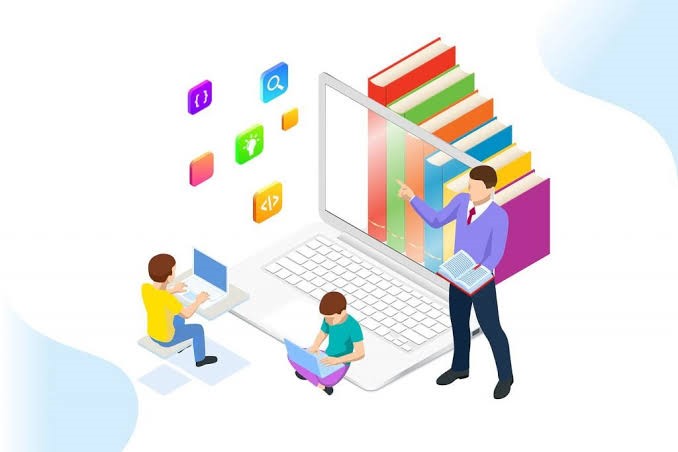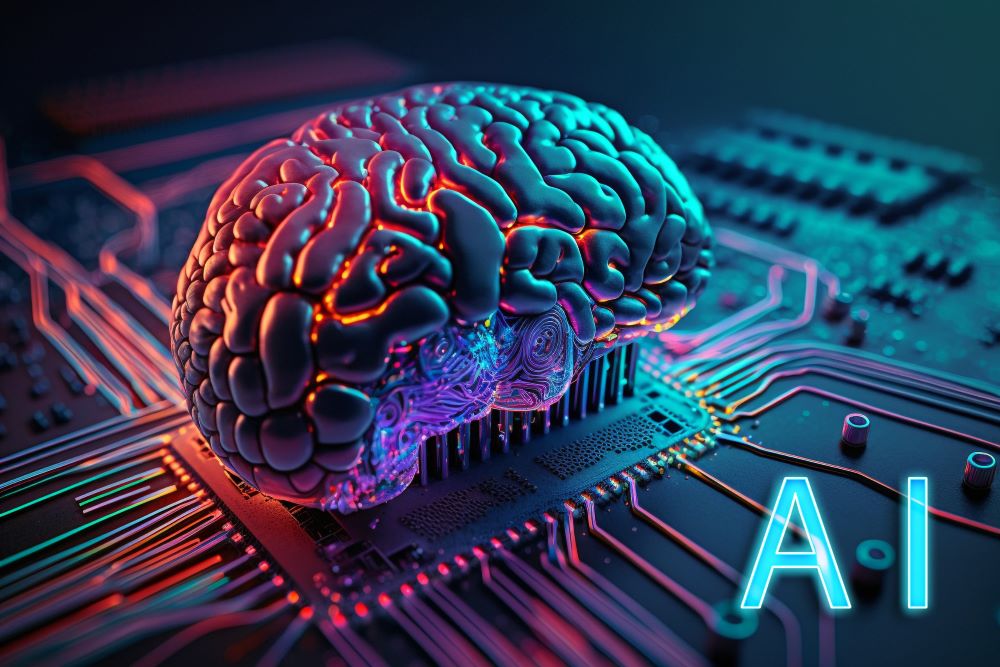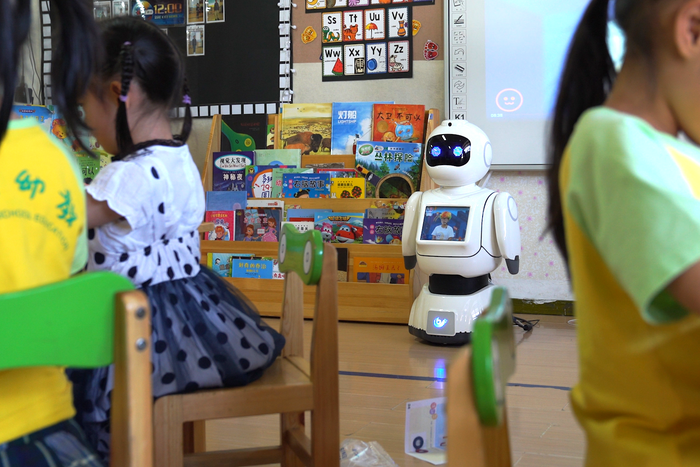
The investment in AI literacy and skills is an investment in the capacity of young learners to thrive in a rapidly evolving landscape
Abdul Hafeez Haral
Amid the rapidly evolving technological landscape, artificial intelligence (AI) has emerged as a transformative force in various sectors, from healthcare and finance to transportation and education. Its influence underscores the need to prepare young learners to comprehend and engage with this dynamic terrain.
This exploration delves into the crucial significance of integrating AI concepts into primary education. By providing students with a foundational understanding of AI, we empower them to develop critical thinking and creative problem-solving skills that are essential for an AI-driven future. As we traverse discussions on AI advancements, ethical considerations, and practical implementation, the discourse illuminates AI’s potential to enrich the educational journey of young minds. Embracing AI within the classroom emerges as a pivotal step entrusted to educators, parents, and guardians in nurturing the next generation of innovators, ensuring they are well-equipped to thrive in an ever-evolving world.
Unprecedented Advancement in AI: Shaping the Landscape
The evolution of AI has brought about significant transformations across various sectors, profoundly influencing industries like healthcare, finance, transportation, and education. Consider the application of AI-driven diagnostic tools such as PathAI in healthcare, where machine learning algorithms analyze medical data to detect diseases at earlier stages, potentially saving lives. In the financial sector, AI-powered algorithms, accountsIQ, make real-time market predictions, aiding investors in making informed decisions. These advancements extend to education, where personalized learning platforms use AI, ChatGPT, to adapt to students’ individual needs and pace, enhancing their understanding of subjects. Recent breakthroughs in natural language processing have enabled AI systems to understand and generate human language, while advancements in computer vision allow AI, TensorFlow, to recognize and interpret visual data. These strides in AI capabilities underscore the pressing need to explore its integration into primary education, equipping young learners with the skills to navigate and leverage this transformative technology.
 Why Include AI in Primary Education: Fostering Critical Thinkers
Why Include AI in Primary Education: Fostering Critical Thinkers
In an age where artificial intelligence (AI) is intricately woven into daily life, integrating AI concepts into primary education assumes a pivotal role. Beyond using AI-driven tools, students must comprehend AI’s foundational principles to actively engage in an AI-driven world. Imagine students embarking on a project involving AI-powered chatbots; by deciphering their workings, students cultivate critical thinking abilities, evaluating responses, detecting biases, and contemplating societal impacts. This process nurtures analytical skills, empowering students to dissect challenges and devise innovative AI-driven solutions with ethical considerations. In essence, the integration of AI concepts fosters a mindset of curiosity, inquiry, and astute evaluation, equipping students to confidently navigate and contribute to an AI-infused future.
Benefits of AI Integration: Enhancing Learning Experiences
The integration of artificial intelligence (AI) into education holds the promise of transformative enhancements in the learning journey of young students. According to Verdú, Regueras, Gal, de Castro, Verdú, and Kohen-Vacs (2017), integrating an AI system into primary education can provide personalized instruction for a diverse range of young learners. Imagine a classroom where AI-powered systems adapt learning materials and methods to each student’s individual needs and pace, ensuring optimal comprehension and engagement. Personalized learning, facilitated by AI, enables students to delve into subjects at their own pace, reinforcing understanding and self-confidence. Additionally, AI-driven adaptive assessments continuously analyze students’ performance, identifying strengths and areas for improvement in real-time. This data-driven approach enables educators to tailor instruction more effectively, creating a dynamic and responsive learning environment. Interactive educational tools infused with AI technology further amplify engagement; students can explore simulations, virtual experiments, and immersive scenarios, enriching their understanding through experiential learning. By leveraging AI, education becomes a dynamic, individualized, and interactive experience, fostering a generation of empowered learners prepared to thrive in a rapidly evolving world.
Ethical Considerations: Navigating AI’s Impact
As artificial intelligence (AI) becomes increasingly integrated into various aspects of society, addressing the ethical dimensions of its use is of paramount importance, especially within primary education. Imagine students exploring the capabilities of AI algorithms that recommend personalized content. By discussing the data privacy implications of such systems, students gain an understanding of the potential trade-offs between convenience and safeguarding personal information. Moreover, AI systems can inadvertently perpetuate biases present in their training data, influencing decisions and perpetuating societal inequalities. Engaging students in conversations about algorithmic bias prompts critical examination of how AI technologies can inadvertently amplify or mitigate existing disparities. Teaching ethical AI use from an early age equips students with the awareness needed to make informed decisions and actively shape AI’s societal impact. By nurturing a sense of responsibility, empathy, and an understanding of the ethical challenges, students are better prepared to navigate the complex ethical landscape of an AI-driven world and contribute positively to its development.
Practical Implementation: Bridging Theory and Practice
Moving beyond theoretical concepts, the practical integration of artificial intelligence (AI) into primary education holds the key to unlocking its transformative potential. Consider an AI-powered tutor that adapts its instruction based on each student’s strengths and weaknesses. This personalized guidance not only enhances subject comprehension but also instills a sense of ownership and motivation in students. Similarly, interactive simulations fueled by AI allow students to explore scientific phenomena or historical events, enabling experiential learning that traditional methods may struggle to replicate. These examples underscore the power of AI-driven learning to engage and inspire young minds in ways that resonate with their digital-native sensibilities.
In this implementation journey, teachers assume a pivotal role as facilitators. Educators guide students in navigating AI-powered tools, helping them interpret results, critically assess AI-generated content, and understand the ethical implications of AI applications. Teachers also provide context and real-world insights, enriching students’ understanding of AI’s practical significance. Their guidance ensures that the integration of AI aligns with educational objectives, creating a balanced blend of AI-driven innovation and traditional pedagogical approaches. By fostering an environment where AI seamlessly complements teacher-student interactions, educators harness technology to elevate learning experiences and empower students for the future.
Preparing Educators: Equipping Teachers for the Future
As artificial intelligence (AI) takes center stage in education, preparing educators to harness its potential becomes an essential imperative. Imagine educators participating in specialized training programs where they delve into the intricacies of AI algorithms, understanding their functions and applications. Through hands-on experiences, teachers gain proficiency in utilizing AI-powered educational tools, enabling them to design engaging lessons that leverage technology for enhanced student learning. Moreover, educators explore ethical considerations surrounding AI, learning to navigate challenges related to bias, privacy, and responsible AI use.
Highlighting dedicated resources and programs that foster educators’ AI knowledge further bolsters their confidence in guiding students through an AI-powered era. These initiatives provide educators with up-to-date information on AI trends and innovations, enabling them to adapt their teaching methods and curriculum accordingly. By equipping educators with the skills and knowledge needed to effectively integrate AI into the classroom, we ensure that students receive a well-rounded education that prepares them to excel in a digitally-driven world. In this way, teacher training becomes a cornerstone of cultivating the next generation of AI-literate and technologically adept individuals, positioning them to thrive in an ever-evolving landscape.

Conclusion: Empowering Future Innovators
In conclusion, the integration of artificial intelligence (AI) into primary education holds the promise of cultivating a generation of empowered and innovative thinkers. Consider the impact of AI literacy on students as they navigate the complexities of an ever-changing world. Armed with a foundational understanding of AI, students are poised to embrace new challenges with confidence, making informed decisions about AI-driven technologies that permeate their lives.
Imagine students who possess the ability to discern the potential and limitations of AI systems, critically evaluating the information and recommendations they encounter. By honing their AI literacy, students are equipped to be proactive contributors to the evolution of AI, identifying opportunities to improve systems, enhance ethical practices, and drive positive societal change.
Moreover, integrating AI into education nurtures a sense of adaptability and innovation. Students learn to collaborate with AI tools, exploring novel solutions and applications that amplify their creativity and problem-solving capabilities. This blend of human intelligence and AI-driven augmentation fosters a dynamic synergy, empowering students to be at the forefront of innovation and shaping a future where technology serves as an enabler rather than a disruptor.
In essence, the investment in AI literacy and skills is an investment in the capacity of young learners to thrive in a rapidly evolving landscape. By nurturing their ability to navigate and leverage AI, we empower them to shape the future, driving progress, and innovation in ways that align with ethical principles and societal values. As we embark on this journey, we embrace the exciting potential of AI in education, confident that our efforts will yield a generation of forward-thinking individuals poised to make a meaningful and lasting impact on the world.
_____________________
Abdul Hafeez Haral is student of BS English at Shaheed Benzir Bhutto University Shaheed Benzir Abad Sindh